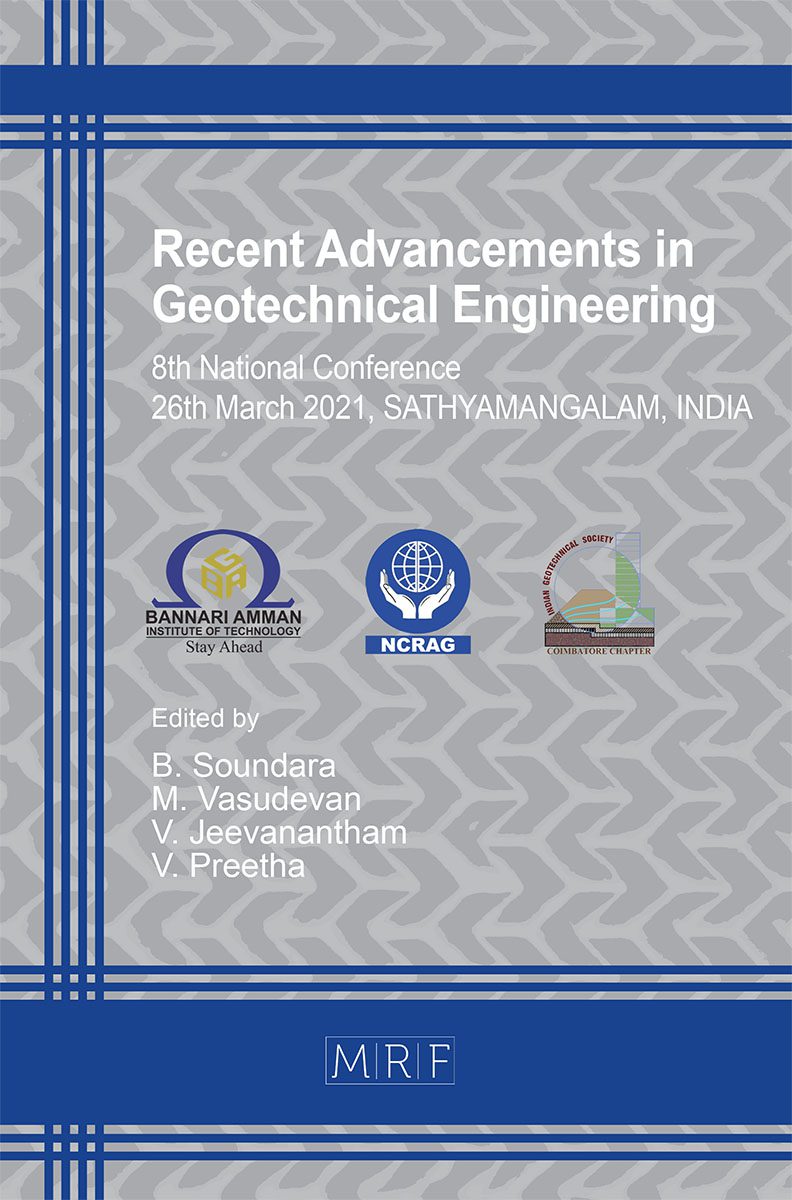A Study on Sustainable Reutilization of C&D Debris in the Construction of Traffic Barrier
S. Janani, V. Ranjani, H. Ram Prithivi, R. Poongundran
download PDFAbstract. In India, the construction industry is growing at twice the world average. This leads to a significant accumulation of C&D waste. This typically includes asphalt, steel, concrete, bricks, wood and other building materials. It is estimated on a conservative basis that over 25-30 million tons of C&D waste is generated which clogs rivers, blocks traffic and occupies land / agricultural space which in turn creates pollution, solid waste production, discharge of dust and gas and leads to additional utilization of natural resources including non-renewable resources, thereby depleting the available resources. Only little amount of construction and demolition concrete debris is recycled or reused. Construction and demolition waste generation and handling issues are being focused to achieve sustainable goals. Based on this study, experimental investigations are carried out to evaluate the material properties and to study the strength characteristics and effect of partial replacement (20 %, 30 % and 40 %) of both fine and coarse aggregate obtained from construction and demolition waste (CDW) in the construction of intermediate road traffic concrete barriers.
Keywords
C&D debris, Recycling Techniques, Traffic Barriers, Sustainable Approach, Fine and Coarse Aggregate
Published online 8/15/2021, 7 pages
Copyright © 2021 by the author(s)
Published under license by Materials Research Forum LLC., Millersville PA, USA
Citation: S. Janani, V. Ranjani, H. Ram Prithivi, R. Poongundran, A Study on Sustainable Reutilization of C&D Debris in the Construction of Traffic Barrier, Materials Research Proceedings, Vol. 19, pp 108-114, 2021
DOI: https://doi.org/10.21741/9781644901618-14
The article was published as article 14 of the book Recent Advancements in Geotechnical Engineering
![]() Content from this work may be used under the terms of the Creative Commons Attribution 3.0 licence. Any further distribution of this work must maintain attribution to the author(s) and the title of the work, journal citation and DOI.
Content from this work may be used under the terms of the Creative Commons Attribution 3.0 licence. Any further distribution of this work must maintain attribution to the author(s) and the title of the work, journal citation and DOI.
References
[1] Avinash M, Vishal K, Dnyaneshwar G, Vikram G, Sachin M and Prof Nigade Y M 2018 Preparation of Bricks using Construction and Demolition waste and Sludge Vol. 6 Issue 3 IJIRCCE ISSN (Online): 2320-9801[2] Shivkumar H, Rohit M. Shinde, Vaishnavi B and Tejashree G 2018 Experimental Investigation On Effect Of Demolished Aggregate In Paving Block Vol. 5 Issue 7 JETIR (ISSN-2349-5162)
[3] Vishal V P, Vinayak B K, Avadhut K and Akash K 2017 Use of Construction Demolition Waste in Pavement Vol. 4 Issue 12 IJIRCCE ISSN: 2350-0328
[4] Mohit A and Amit K 2017 Reusability of Construction & Demolition waste in bricks Vol.4 Issue 12 IRJET e-ISSN: 2395-0056
[5] Yeotikar V U, Kulkarni G A, Syed Nadeem , Bhosale N M and Kokare D R 2018 Experimental Study on Bricks by Using Demolished Construction Material Vol.15 Issue2 JASRAE E-ISSN: 2230-7540. https://doi.org/10.29070/15/56790
[6] Makegaonkar A R, Dange P S and Waghmode R B 2018 Study of Construction and Demolition waste for reuse and recycleVol. 5 Issue 07 IRJET e-ISSN: 2395-0056
[7] Mahesh T, Krutika P, Priyanka N and Aditya P 2018 Use of Construction and Demolition Waste as Partial Replacement of Fine Aggregate for Development of Paving BlockVol.15Issue 2 JASRAE E-ISSN : 2230 -7540
[8] IRC 119 2015 – Guidelines for traffic safety barrier































